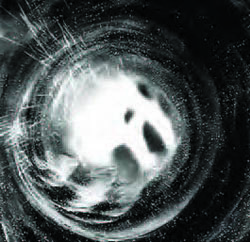In the pro audio industry, more so than most any other business except perhaps detergents or personal care products, the word “new” seems to daily defy the laws of grammar and dictionary rules of definition.
In many respects the use of “new” has become quite similar to what happens around a black hole in space – the accepted concepts of reality no longer apply.
The most universally accepted definition of a black hole is a region where matter collapses to immeasurable density, forming a “singularity” – a point of infinite density and curvature where the laws of physics, time and space as we know them are no longer relevant.
At this “point of no return,” matter and energy are doomed to “disappear” from the visible universe. It’s a transition into a region where gravity is so strong that nothing, not even light, can escape.
Our Little Corner
There are times when I think that those who believe they have something “new” in audio are exploring other space-time continuums, free from the historical issues that exist in our little corner of the universe.
Let’s use the current “line array phenomenon” as an example. I could point to others, but this one has pushed the concept of “new” well beyond any sensible point.
The core mathematics/physics behind the concept of a “line source” is nearly a century old. Certainly by the early 1920s (eight decades ago), a lot of ideas and practices had been defined and refined by the founding fathers of modern audio (mostly the wizards at Bell Labs).
While they couldn’t have built a line array to rival today’s hardware, that’s simply a matter of mechanical and manufacturing technology evolution – not concept creation.
Onward the idea progressed through the minds of Harry Olson, Rudy Bozak, David Klepper, Richard Negus, Leo Beranek, the Mormon Church sound guys and their horizontal arrays, Dan Healy, UltraSound and the Grateful Dead, along with scores of others whose contributions have been subsumed into the collected technology we now see.
Literally hundreds of great minds in audio brought their intelligence to bear on this problem. Across the decades, very few of those contributions were inflated with the words “revolutionary” or “new.”
In published works, I haven’t found any attempt (as some of today’s purveyors have tried) to claim parenthood of the concept. I did find, however, free sharing of ideas, publishing of work to advance the art of audio, discussions of experimentation and both successful and failed paths.
The Origins
Somewhere along the way, the idea of technology development being a collective effort has been pushed aside in favor of the almost Stalinistic concept of “I invented this from nothing” and “what happened in the past is irrelevant – I created this.”
If you want to see the origins of a lot of what is “new” today I suggest reading Frederick Vinton Hunt’s Electroacoustics or his Origins in Acoustics, which nicely summarize the vast majority of the work in the discipline up to their date of publication (and which include ALL the historical references you might ever need).
And if Hunt doesn’t provide a boatload of previous citations on the topic, then Olson’s Music, Physics and Engineering will. There is a saying in our industry: “if you think you invented something, check Olson first. You’re probably wrong.”
Think about that the next time one of those gorgeous brochures screaming “new” lands on your desk. And look at the index of Olson and Hunt.
Fred Ampel has been involved in the A/V industry for 35 years, working with sound reinforcement, studio, A/V system design, installations and equipment development.















